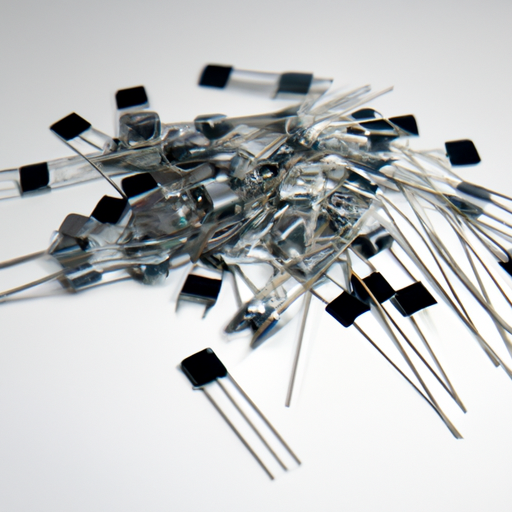What is the Price of Popular Non-Inductive Resistor Models in Stock?
I. Introduction
In the world of electronics, resistors play a crucial role in controlling current flow and voltage levels. Among the various types of resistors, non-inductive resistors are particularly significant due to their unique characteristics that minimize inductance effects. This article aims to provide an overview of popular non-inductive resistor models, their specifications, and their price ranges, helping engineers and hobbyists make informed purchasing decisions.
II. Understanding Non-Inductive Resistors
A. Explanation of Inductance and Its Effects in Circuits
Inductance is a property of electrical circuits that opposes changes in current. When current flows through a conductor, it generates a magnetic field. In resistors, especially those with coils or windings, this magnetic field can create unwanted inductance, leading to signal distortion, especially in high-frequency applications. Non-inductive resistors are designed to minimize this effect, making them ideal for sensitive electronic applications.
B. Characteristics of Non-Inductive Resistors
1. **Low Inductance**: Non-inductive resistors are constructed to have minimal inductance, ensuring that they do not interfere with the circuit's performance.
2. **High Stability**: These resistors maintain their resistance value over a wide range of temperatures and operating conditions, making them reliable for precision applications.
3. **Temperature Coefficient**: Non-inductive resistors typically have a low temperature coefficient, meaning their resistance changes very little with temperature fluctuations.
C. Applications of Non-Inductive Resistors
1. **Audio Equipment**: In audio applications, non-inductive resistors are used to ensure clear sound reproduction without distortion.
2. **Power Electronics**: They are essential in power electronics for load testing and current sensing, where precision is critical.
3. **Measurement and Calibration**: Non-inductive resistors are often used in measurement devices and calibration equipment due to their accuracy and stability.
III. Popular Non-Inductive Resistor Models
A. Overview of Leading Manufacturers
Several manufacturers are known for producing high-quality non-inductive resistors. The most notable include:
1. **Vishay**
2. **Ohmite**
3. **TE Connectivity**
4. **Bourns**
B. Detailed Review of Popular Models
1. Vishay's Non-Inductive Resistor Series
Specifications: Vishay offers a range of non-inductive resistors with power ratings from 1W to 100W, featuring low inductance values and high stability.
Price Range: Prices typically range from $0.50 to $10.00 per unit, depending on the specifications and power rating.
2. Ohmite's Non-Inductive Resistor Series
Specifications: Ohmite's non-inductive resistors are designed for high power applications, with resistance values from 0.1Ω to 1MΩ and power ratings up to 200W.
Price Range: The price for these resistors generally falls between $1.00 and $15.00 per unit.
3. TE Connectivity's Non-Inductive Resistor Series
Specifications: TE Connectivity provides non-inductive resistors with excellent thermal stability and low noise, suitable for various applications.
Price Range: Prices range from $0.75 to $12.00 per unit, depending on the model and specifications.
4. Bourns' Non-Inductive Resistor Series
Specifications: Bourns offers a selection of non-inductive resistors with a focus on precision and reliability, featuring power ratings from 0.5W to 50W.
Price Range: The price for Bourns' non-inductive resistors typically ranges from $0.60 to $8.00 per unit.
IV. Factors Influencing the Price of Non-Inductive Resistors
Several factors contribute to the pricing of non-inductive resistors:
A. Material Composition
The materials used in manufacturing non-inductive resistors, such as metal film or wire wound, can significantly affect their cost. High-quality materials often lead to better performance and higher prices.
B. Manufacturing Process
The complexity of the manufacturing process also plays a role in pricing. Advanced techniques that ensure low inductance and high stability may increase production costs.
C. Tolerance and Precision
Resistors with tighter tolerances and higher precision typically command higher prices. Applications requiring exact resistance values will necessitate investing in more expensive models.
D. Market Demand and Supply
Like any other product, the prices of non-inductive resistors are influenced by market demand and supply dynamics. Increased demand for electronic components can lead to price fluctuations.
E. Distribution Channels
The distribution method can also impact pricing. Online retailers may offer competitive prices due to lower overhead costs compared to physical electronics stores.
V. Where to Buy Non-Inductive Resistors
A. Online Retailers
1. **Digi-Key**: A leading distributor of electronic components, Digi-Key offers a wide selection of non-inductive resistors from various manufacturers, often with competitive pricing.
2. **Mouser Electronics**: Similar to Digi-Key, Mouser provides an extensive inventory of non-inductive resistors, along with detailed specifications and datasheets.
3. **Newark**: Newark is another reputable online retailer that stocks a variety of non-inductive resistors, catering to both hobbyists and professionals.
B. Physical Electronics Stores
Local electronics stores may carry a limited selection of non-inductive resistors. While prices may be higher than online, the advantage is immediate availability and the ability to consult with knowledgeable staff.
C. Manufacturer Direct Sales
Purchasing directly from manufacturers can sometimes yield better prices, especially for bulk orders. Many manufacturers have online stores or provide contact information for sales inquiries.
D. Comparison of Prices Across Different Platforms
Before making a purchase, it is advisable to compare prices across different platforms. Online tools and price comparison websites can help identify the best deals.
VI. Conclusion
In summary, non-inductive resistors are essential components in various electronic applications, providing stability and precision. Understanding the characteristics, applications, and pricing of popular non-inductive resistor models can help engineers and hobbyists make informed decisions. As technology advances, we can expect to see trends in pricing and improvements in non-inductive resistor technology, making them even more accessible and effective for a wide range of applications.
VII. References
- Manufacturer websites for Vishay, Ohmite, TE Connectivity, and Bourns.
- Online retailers such as Digi-Key, Mouser Electronics, and Newark.
- Industry reports and market analysis on electronic components and resistors.
This comprehensive overview serves as a valuable resource for anyone looking to understand the market for non-inductive resistors and their pricing dynamics.






